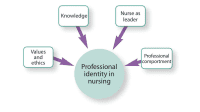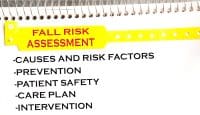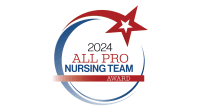Are we asking the right questions?


In this month’s issue of American Nurse Journal, Andrea Kossoudji and Julie Scott introduce us to an important issue—the awareness and skills nurses need to identify and treat potentially hidden illnesses in the veteran population. The U.S. veteran population may have declined since 1980 (from about 18% to 7%), but the potential for invisible illness has increased. Nurses must understand how veterans access healthcare services and the importance of recognizing military service during the assessment process. Knowing the list of questions we should ask helps us uncover potential sources of unseen and undisclosed information that may point to the need for additional medical interventions.
Thinking about the insights the authors offered, I found myself realizing that other segments of our patient population also may have invisible or otherwise undisclosed risks. It took years for us to identify all of the dangerous particles that first responders inhaled on September 11, 2001, when the Twin Towers fell, and the resulting sequelae. Working on a cancer prevention and detection project with one of our local firefighter organizations, I learned that the cancer rate in firefighters is much higher than in the general population because of the dangerous chemicals they inhale on the job. Nurses should understand more about these categories of patients and their occupational exposures, which can affect health in ways that may not be obvious, especially since these patients frequently are reluctant to talk about these issues.
As healthcare providers, nurses are vulnerable, too. We’re exposed to various airborne and bloodborne diseases on a regular basis. Usually, we’re aware of the contagions we’re encountering, but too often we’re not, or we find out too late.
One important invisible injuy that veterans, first responders, and nurses in any clinical setting face is the emotional impact of the trauma and suffering witnessed over a long period of time. Mental health issues, regardless of their origin, have been undiscovered or undisclosed since the days of Florence Nightingale.
As nurses, we’re well trained in taking histories and doing physical assessments in search of obvious or common health problems. This issue’s article about veterans’ healthcare should teach us that we need to ask more than just the common or standard questions. In addition to changing our assessment process due to COVID-19 and the “new normal,” we also need a new set of standard questions when triaging patients to learn about their personal, employment, and health histories. Broader and more targeted red flags can stimulate questions that delve deeper into the health implications of being a veteran, a first responder, or a healthcare provider.
The more we learn about invisible injuries and illnesses, the quicker we can create new, expanded strategies for exposing them. As both a nurse and a veteran of the U.S. Navy Nurse Corps, I’m grateful for the work of Kossoudji and Scott and so many others who are bringing this important issue to light.


Lillee Gelinas, DNP, RN, CPPS, FAAN
Editor-in-Chief



















1 Comment. Leave new
I just found this article and i too believe that we need to pay more attention to this factor in caring for patients